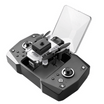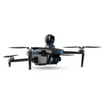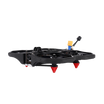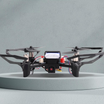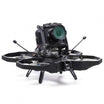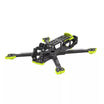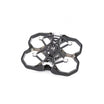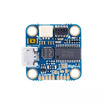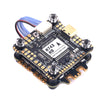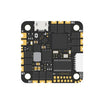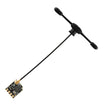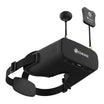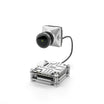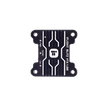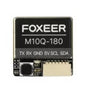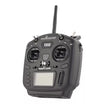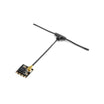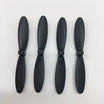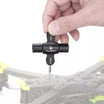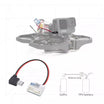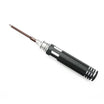If you’ve ever wondered what FPV drones are, how they work, and why they’re taking over drone flying in India and around the world, you’re in the right place.
Whether you’re a curious newbie or a parent buying your teen their first drone, this 2025 guide will break it all down in simple terms.
First Things First: What Does FPV Mean?
FPV stands for First-Person View. Unlike regular drones that you fly by looking at them from the ground, FPV drones let you see what the drone sees, in real-time.
This gives you a feeling of sitting inside the drone, as if you were the pilot flying through the air.
In simple words, an FPV drone is a flying robot equipped with a camera that streams live video back to the pilot. This live feed can be watched on:
- FPV goggles (for the most immersive experience)
- A mobile phone or tablet
- A remote controller screen
Also read: Drones are changing cities - Smarter, faster, and cheaper
Why Are FPV Drones So Popular in 2025?
FPV drones are growing rapidly in popularity for several reasons:
Thrilling Experience: FPV flying is highly engaging and gives you a unique adrenaline rush. It’s no surprise it’s a fast-growing sport worldwide.
Drone Racing: Competitive drone racing is gaining traction in India with leagues, tournaments, and communities forming.
Creative Cinematography: FPV drones capture dynamic, cinematic footage impossible to get with traditional drones.
Affordable Tech: Thanks to “Make in India” initiatives and local brands like InsideFPV, FPV drones have become more affordable and accessible.
Also read: A guide to Elevate Z1
How Do FPV Drones Work? Their Key Components Explained

To understand FPV drones better, it’s useful to know their main components:
Frame - The drone’s skeleton is made from carbon fiber or plastic, holding everything together. Frames come in various sizes (from tiny 2-inch to large 7-inch), affecting speed and maneuverability.
Motors and Propellers - Motors spin propellers that generate thrust. More powerful motors mean faster and more agile drones.
Flight Controller - The drone’s brain that stabilizes flight and processes pilot commands.
Electronic Speed Controllers (ESCs) - Control motor speed for precise movements.
FPV Camera and Video Transmitter (VTX) - The camera captures the live video feed, and the VTX sends it wirelessly to your goggles or screen.
Remote Controller and Receiver - Your controller sends commands, and the receiver on the drone receives them to fly accordingly.
Battery - Usually LiPo batteries power the drones. Bigger batteries provide longer flight times but add weight.
Which Type of Drone is Right for You?
Understanding the types of FPV drones helps you choose the right one for your goals:
Tiny Whoops

- Small, lightweight drones with ducted fans
- Perfect for indoor flying and absolute beginners
- Easy to repair and less risky
Cinewhoops

- Slightly bigger with protective ducts
- Designed for smooth, cinematic footage
- Can carry small action cameras (GoPro, Insta360)
Racing Drones

- Built for high speed and agility
- Lightweight frames, powerful motors
- Best suited for competitive racing and freestyle flying
Freestyle Drones

- Focus on tricks and aerial acrobatics
- Durable frames to withstand crashes
- Popular among experienced pilots
Long-Range FPV Drones

- Designed for extended flight times and distances
- Equipped with GPS and failsafe features
- Used for exploration, mapping, and search & rescue
Also read: How to pick the perfect size in FPV drones
Essential Skills You Need to Fly an FPV Drone

Flying FPV drones takes practice. Unlike consumer camera drones with GPS stabilization, these drones are flown manually. This gives you full control but also requires skill.
Here’s what beginners should do:
- Start With a Simulator: Programs like Liftoff or Velocidrone let you practice flying without risking a real drone.
- Learn Basic Controls: Get comfortable with throttle, pitch, yaw, and roll.
- Practice Hovering and Circuits: Build smooth flying skills gradually.
- Join Local FPV Groups: Get tips and guidance from experienced pilots.
Where Can You Fly FPV Drones in India?
In India, drone flying is regulated by the Directorate General of Civil Aviation (DGCA).
Here’s a quick summary of 2025 rules for FPV drone pilots:
- Register Your Drone: All drones above 250 grams must be registered on the DGCA’s Digital Sky platform.
- Fly Below 400 Feet: Stay under the altitude limit.
- Avoid No-Fly Zones: Airports, defense areas, and sensitive locations are off-limits.
- Use a Spotter: When flying FPV goggles, a spotter should keep visual contact with the drone for safety.
You can also read our detailed guide on drone laws in 2025.
What to Look for When Buying Your First FPV Drone?
If you’re ready to buy your first FPV drone, here are key factors to consider:
- Ready-to-Fly (RTF) vs Build-Your-Own: RTF kits are great for beginners, while DIY builds offer customization.
- Frame Size: 3-5 inch frames are versatile for beginners.
- Durability: Look for carbon fiber frames and durable parts.
- Battery Life: Aim for 3-5 minutes of flight per battery pack.
- Goggles Compatibility: Ensure the video system works with your FPV goggles.
- Brand Reputation: Brands like InsideFPV, GEPRC, BetaFPV, and Eachine offer good options for Indian buyers.
What’s Next? FPV Flying Trends to Watch in 2025
These are some of the FPV flying trends that will take off in 2025:
- AI-assisted Flight Control: Beginner-friendly features to assist in tricky maneuvers.
- Improved Battery Tech: Longer flight times with lighter packs.
- Advanced Video Transmission: 4K and HD live FPV feeds.
- Integration with VR and Metaverse: New ways to experience drone flight virtually.
- More Indian Startups & Manufacturing: Boosting local innovation and affordability.
Frequently Asked Questions
What is the difference between FPV drones and regular drones?
FPV drones stream live video to the pilot’s goggles, giving a first-person flying experience, ideal for racing and freestyle. Regular drones use GPS stabilization and are easier for beginners focused on photography.
Is flying an FPV drone difficult for beginners?
FPV drones require practice and skill as they don’t have GPS stabilization. Beginners are advised to start with simulators and beginner-friendly drones before moving to advanced models.
Do I need to register my FPV drone in India?
Yes, all drones weighing more than 250 grams must be registered on DGCA’s Digital Sky platform as per 2025 regulations.

